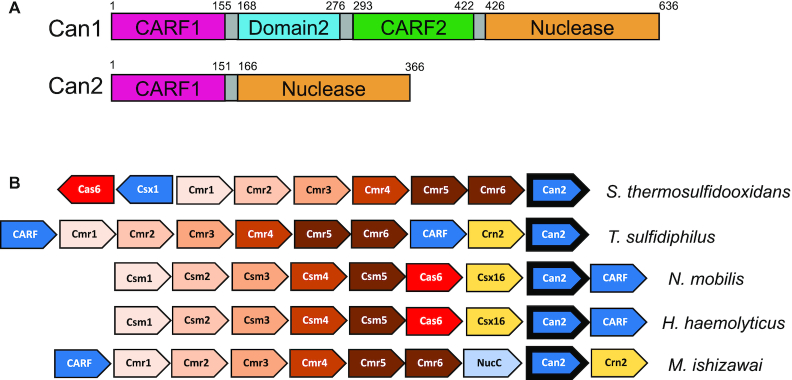Figure 1.
Genome context and domain organisation of Can2. (A) Domain organisation of Can1 and Can2. Each has an N-terminal CARF domain and a C-terminal PD-ExK superfamily nuclease domain. The can1 gene has been predicted to arise from a gene duplication of can2 (19) and includes Domain 2 – a divergent inactive nuclease domain. The can2 gene numbering is from S. thermosulfidooxidans. (B) Gene organisation of selected CRISPR type III systems that include a can2 gene. Can2 is found associated with both type III-A (Csm) and type III-B (Cmr) systems, and frequently with other CARF family effector proteins. A common neighbouring gene encodes the Crn2 ring nuclease for degradation of cA4 (27). Genes labelled as ‘CARF’ encode uncharacterised CARF family proteins. Genes are coloured consistently across the different genomes. Species represented are Sulfobacillus thermosulfidooxidans (Sth), Thioalkalivibrio sufidiphilus (Tsu), Nitrococcus mobilis, Haemophilus haemolyticus and Methylomagnum ishizawai.

